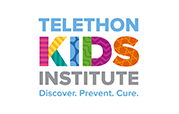Young Minds Matter Survey results
Survey estimates
Weighting and rounding
All estimates have been derived from the survey sample, and weighted to represent the population of children and families in Australia. The estimates have been rounded, generally to three significant digits. As such, discrepancies may occur between the sums of component items and their totals.
Confidentiality and suppression of cells
Estimates have been suppressed where there were less than 5 survey respondents contributing to a cell. These appear as blank cells in tables and are omitted from charts.
Accuracy of estimates
Estimates are shown along with 95% confidence limits. Because Young Minds Matter was based on a sample and not a full census of Australian children and adolescents, the survey estimates could differ from the results that would be obtained from a full census due to random chance. The 95% confidence limits give an indication of the degree of sampling variability associated with the estimates. As a general rule, estimates that are based on larger numbers of contributing children are more accurate than those where fewer sample children contribute to the estimate. For instance, using the remoteness classification, the prevalence estimates for Major Cities are more accurate than those for Remote Australia because a higher proportion of the sample was located in Major Cities.
As an approximate rule of thumb, when comparing two prevalence estimates, if the ranges for the confidence limits of both estimates overlap, there is a higher chance that any difference between the two figures could be attributed to chance variation. When the ranges of the confidence limits do not overlap there is a greater chance that a full census would also have found a difference in the figures being compared.
12-month prevalence
Exhibiting symptoms of the problem in the 12 months prior to interview. Prevalence includes both new cases, whose symptoms first developed during the 12 months prior to the interview and continuing cases whose symptoms were present prior to the 12 months, but persisted, and were at a level to meet the diagnostic criteria in the 12 months prior to interview.
Problem internet or electronic gaming behaviours
Young people were asked about five specific behaviours that may be indicative of addiction to the internet, social media or electronic gaming:
- i) going without eating or sleeping in order to be on the internet or play electronic games
- ii) feeling bothered or upset if they are unable to be on the internet or gaming
- iii) catching themselves surfing the internet or playing games even when they are not interested
- iv) spending less time than they should with family or friends or doing school work or work because of the time they spend on the internet or gaming
- v) having tried unsuccessfully to reduce the time spent on the internet or playing electronic games.
Problem internet or electronic gaming behaviour has been defined as reporting four or five of these individual indicators.
Classification variables
Family type
Families were classified into families with two parents or carers and families with one parent or carer. Families with two parents or carers were further categorised into original, step, blended or other families corresponding to the Australian Bureau of Statistics family blending classification variable introduced in the 2006 Census. These are defined as follows:
- Original families contain at least one child who is the natural, adopted or foster child of both partners in the couple and no step children. The Australian Bureau of Statistics refers to this category as ‘intact families’.
- Step families have at least one resident step child, but no child who is the natural or adopted child of both partners.
- Blended families have two or more children; at least one child who is the natural or adopted child of both parents, and at least one who is the step child of one of them.
- Other families have no children who are the natural, adopted, foster or step child of either parent or carer. These include families with children being raised by their grandparents or other relatives.
Household income
Household income has been split into three approximately equally sized groups. Around 4% of families either didn’t know or refused to provide their household income. These families have been excluded from tables and charts relating to household income.
Labour force status
This classifies people as employed when working full-time, part-time or away from work, or not in employment when unemployed or not in the labour force. Employed includes casual, temporary or part-time work if it was for an hour or more.
For the purposes of the survey this was collected for both parents and carers for the previous week.
Index of relative socio-economic disadvantage
The index of relative socio-economic disadvantage is produced by the Australian Bureau of Statistics from the 2011 Census of Population and Housing, and gives a summary measure of the relative socio-economic disadvantage of the Statistical Area 1 (SA1) that the household is located in.
Area of residence
Area of residence was categorised as either Greater Capital Cities or Rest of state based on the Australian Bureau of Statistics Greater Capital City Statistical Area (GCCSA) classification. This classification represents the functional extent of the eight state and territory capital cities in Australia. Households within these areas were classified as Greater Capital Cities. The remainder were classified as Rest of state.
Remoteness area
Remoteness areas are based on the Australian Bureau of Statistics Remoteness Area classification for the Statistical Area 1 (SA1) the household is located in.
The top 1% most remote SA1s in Australia were excluded from the sampling frame, and the survey has poor coverage of very remote areas. For output purposes the categories 'Remote Australia' and 'Very Remote Australia' have been combined.
The ABS Remoteness Area classification is based on the Accessibility/Remoteness Index of Australia (ARIA+) produced by the National Centre for Social Application of Geographic Information Systems (GISCA) at the University of Adelaide.
Remoteness area boundaries can be downloaded from the Australian Bureau of Statistics web site www.abs.gov.au
Family functioning
A shortened version of the General Functioning Subscale of the McMaster Family Assessment Device was used to classify families into four levels of functioning. This ranged from very good through to poor, with poor indicating unhealthy family functioning likely to require clinical intervention. Of all families in the survey 3.7% had a poor level of family functioning.
Boterhoven de Haan KL, Hafekost J, Lawrence D, Sawyer MG, Zubrick SR (2014). Reliability and validity of a short version of the general functioning subscale of the McMaster Family Assessment Device. Family Process. doi: 10.1111/famp.12113




